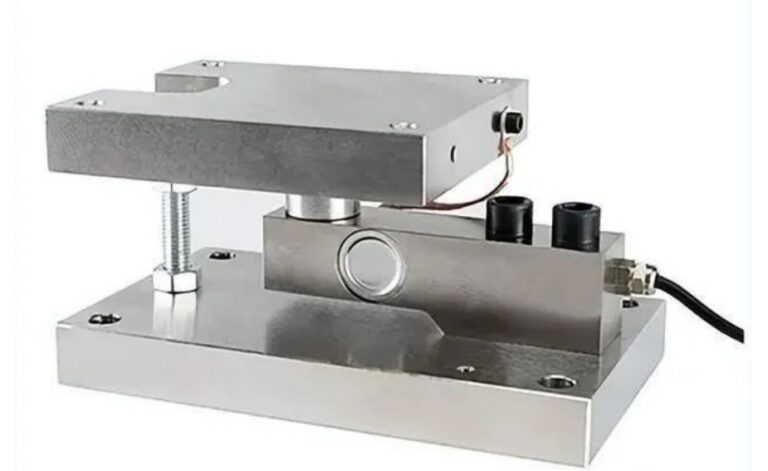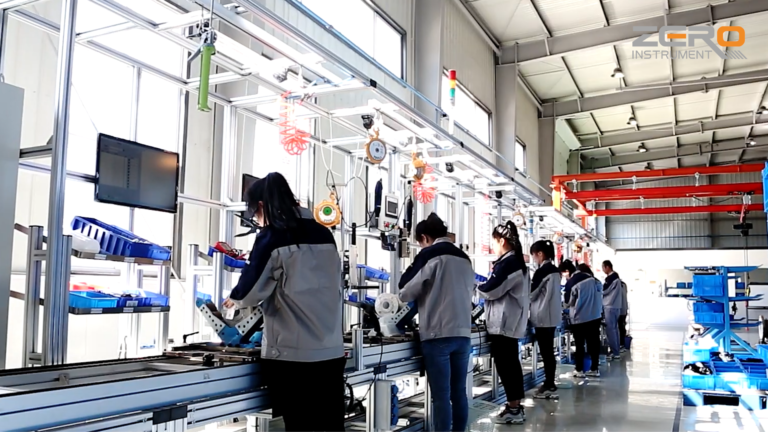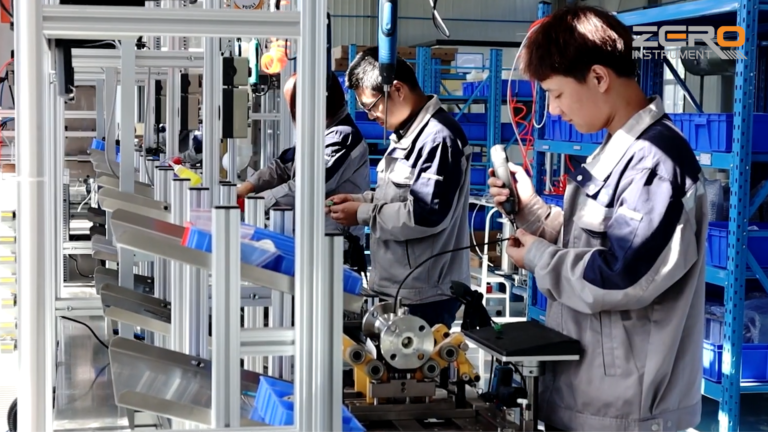Weighing module is a new type of weighing element, which combines weighing sensor, load transfer device and mounting connector together, and can be easily connected with mechanical devices of various shapes, such as vertical tank, trough tank, hopper, etc. According to its shape, it can be mainly divided into cantilever beam type, circular plate type, column type, S-type weighing module, etc.

1. Basic introduction of weighing module
1. Composition structure
The weighing module is composed of a top plate, a bottom plate, a weighing sensor, a load support column and a support bolt structure. It is not affected by the installation conditions and environment, which not only ensures the high precision and long-term stability of the sensor, but also solves the problem of weighing error caused by improper installation.
2. Working Principle
The weighing module generates an analog electrical signal proportional to the weight of the reactor tank, and then the analog signals of each weighing module are connected in parallel to the junction box. We can adjust the output of the weighing module according to the stress conditions of each weighing module, and then send the aggregated signal to the weighing display terminal to display the weight data.

3. Three structures
Depending on the load-bearing column and the top plate, the structure of the weighing module is divided into fixed structure, semi-floating structure and floating structure. In a weighing system, one fixed module and one semi-floating module are used, and the remaining modules are supplemented by floating modules. The floating modules are generally divided into three modules and four modules.
4. Five major features
1️⃣The biggest feature of the weighing module is that it is not restricted by the site, has flexible assembly, is easy to maintain and is cheap.
2️⃣The floor scale has a weighing platform, which requires a certain amount of floor space, while the weighing module is installed on the supporting point of the container and does not require additional floor space. It is particularly suitable for occasions where multiple containers are installed in parallel and the site is narrow.
3️⃣The range and scale value of the electronic scale have certain specifications, while the weighing system composed of the weighing module can set the range and scale value according to the needs within the range allowed by the instrument.
4️⃣The weighing module is easy to maintain. If the sensor is damaged, the support screw can be adjusted to lift the scale body. The sensor can be replaced without removing the weighing module.
5️⃣Due to the simple structure of the weighing module, the weighing system composed of the weighing module has relatively low investment.

2. Classification of weighing modules
Weighing modules can be divided into different types according to the needs of different occasions:
No.1 According to product material
◆ Alloy steel weighing module: suitable for general weighing and measuring occasions, the environment and temperature are in general occasions.
◆ Stainless steel weighing module: suitable for general chemical corrosive, strong acid and alkali ordinary occasions.
No.2 According to environmental requirements
◆ Conventional weighing module: suitable for general weighing and measuring occasions, the environment and temperature are in general occasions.
◆ Explosion-proof weighing module: suitable for dangerous environments requiring explosion-proof, places with requirements for environment and temperature.
No.3 According to usage requirements
◆ Static load weighing module: mainly suitable for static load weighing occasions with small lateral force. Static load weighing module can be easily installed on containers of various shapes.
◆ Dynamic load weighing module: mainly suitable for mechanical devices that bear horizontal forces such as assembly lines, conveyor belts, etc. In addition, dynamic load weighing module can also be used for the transformation of mechanical platform scales.
